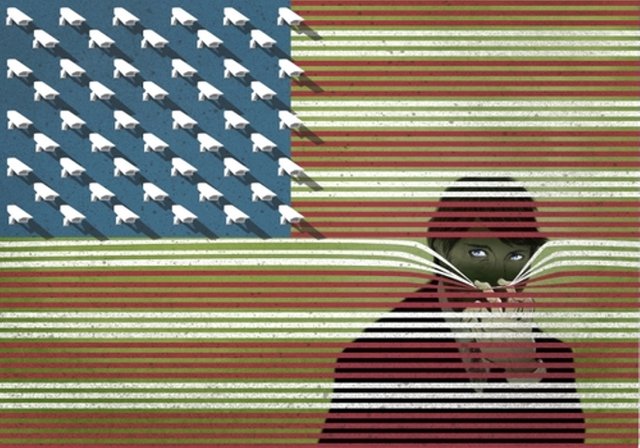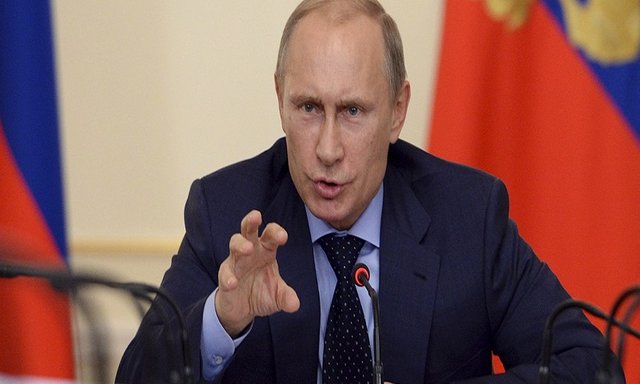Surveillance State Pt 6
The U.S. Spy Network in Action.

The big intelligence organizations that you are probably familiar with— the CIA and the NSA—are only two of at least 17 standalone offices of what we call the Intelligence Community. The goal of this lecture is to help you get a sense of the breadth of the intelligence enterprise: how it is structured, how it functions, how it relates to the rest of government, and maybe even why it is the way it is.
The Intelligence Community
● The Intelligence Community (IC) today is very different from what it was just a few years ago. In the immediate aftermath of the 9/11 terror attacks, the nation’s government leaders concluded that our intelligence apparatus had failed us. So, we made an effort to fix it.
● Prior to 9/11, the many intelligence agencies (and there were fewer back then) were quasi-independent fiefdoms. The head of the CIA actually had two jobs: He ran the agency, and he was the Director of Central Intelligence (DCI) with nominal coordinating functions over all of the other intelligence agencies.
● This arrangement might have made sense early on, when the CIA was the preeminent agency in the IC, but in later years, it proved to be very challenging. For one thing, it is difficult for any one person to do two jobs. For another, the DCI had very little authority over other components of the IC.
● When Congress took a close look at this after 9/11, they didn’t like what they saw. The Intelligence Reform and Terrorism Prevention Act of 2004 established the Office of the Director of National Intelligence (ODNI). The idea was that a single coordinating structure would unify the IC and manage its efforts.
● The ODNI will tell you that the resulting structure is more or less a federation intended to maximize the effectiveness of intelligence collection and dissemination among 17 member agencies while maintaining independence of action among each. Thus, the director’s “role is to organize and coordinate” the efforts of the various agencies “to meet previously determined intelligence needs.”
● One important limitation is worth noting. The office’s budgetary authority is limited to the civilian side—the National Intelligence Program. As part of the back and forth that led to the creation of the office, the Department of Defense carved out the Military Intelligence Program, which is controlled by the Under Secretary of Defense for Intelligence. In practice, this means that large swaths of the IC—including the Defense Intelligence Agency and the NSA— are not formally within the control of the Director of National Intelligence.
● Another innovation of the 2004 law was to establish several national hubs responsible for developing collaborative approaches to the collection and analysis of intelligence for a specific issue.
● The National Counterterrorism Center (NCTC) doesn’t actually collect any information on its own account, but it is designed to serve as the central repository for making connections between all available pieces of information about terrorism that the IC collects. Except for purely domestic terrorism, all of the data that we collect on potential terrorist threats goes through this hub.
● The Office of the National Counterintelligence Executive (ONCIX) is a horse of a different color. Counterintelligence is the art of trying to find the other side’s spies, and the job of finding internal spies is managed by this central executive organization.
What Does the Intelligence Community Do, and How Does It Do It?
● The job of the IC is to collect and analyze information, creating intelligence. The people in the IC will tell you that creating good intelligence is a multistage process—from requirements, to collection, to processing, to analysis, to dissemination.
● Consider the Russian leader Vladimir Putin and what he might have been intending to do in the Ukraine prior to the Russian-backed uprising in the eastern part of the country. Here’s how the IC would approach the problem.
● First, the IC has to set priorities and define what target they are interested in. The Director of National Intelligence—in consultation with the director of the CIA and the director of the NSA—would identify Putin’s Ukrainian intentions as a significant strategic issue. In doing so, they would be responding to consultations they also held with the Department of Defense, the Department of State, and the president’s advisors at the National Security Council.
● Through that collaborative process, the need to understand what was in Putin’s mind would become identified. Through a similar process, they might also decide that they needed to know North Korea’s intentions for its nuclear weapons.
● Once a requirement is identified, the IC will begin to plan an information-gathering campaign to answer the requirement. Some collection might happen through human intelligence (called HUMINT). Some might happen through signals intelligence (called SIGINT), which is the interception of communications. And some might be acquired through image intelligence (IMGINT), such as satellite photographs of Russian troop movements.
● The National Geospatial-Intelligence Agency (NGA) is one of the newest intelligence operations, with its own acronym, GEOINT. Established in 1996 (under the name National Imagery and Mapping Agency), the NGA charts 116 million square miles of ocean and keeps electronic files on 45,000 airfields worldwide. It integrates that information with other intelligence to reveal where threats might arise, what their patterns of activity are, and how those forces relate to other pieces of the picture.
● Let’s keep thinking about Putin in the Ukraine and examine who the NGA might help. But instead of using classified sources, let’s consider what can be done using open-source satellite imagery.
● After the breakaway effort in eastern Ukraine got underway—and even as Russian authorities disclaimed any direct involvement—a research institution in Washington called the Atlantic Council released an analysis based, in part, on the freely available Internet-based services Google Earth and YouTube. They found photographs of large craters in Ukraine and videos of rocket launchers on nearby Russian territory, and they figured out that Russian units had fired across the border.
● The report also used satellite photographs (along with indiscreet social media posts by Russian soldiers) to identify the Russian military camps being built near the border. Tracking by satellites photographs, video, and other visual evidence also enabled the Atlantic Council to track what it identified as Russian rocket launchers, tanks, and so on. The bottom line was pretty clear: Russian troops and gear were operating in Ukraine territory.
● And if we can reach that conclusion readily using publicly available information, the NGA likely had even more convincing data.
● The information collected doesn’t necessarily come in pristine form. Some images, for example, need to be processed through imageenhancing technology. Encrypted communications need to be decrypted, and the codes that protect them need to be broken. Even human intelligence needs to be interpreted, or processed in some sense, to the extent that we are constantly evaluating the credibility of our spies and their capabilities.
● Eventually, the IC gathers all the information that it reasonably—or not so reasonably—can about a particular topic.
● Then comes possibly the most important phase of the intelligenceproduction cycle: analysis. What exactly do Russian troop movements

on the Ukrainian border portend? What does our image intelligence show us? Does it match or conflict with what we think we know from the interception of Russian communications? And how does all of this fit into the overarching economic circumstances that Russia finds itself in because of, for example, the price of oil?
● One thing that is often lost on people outside of the IC is how dependent intelligence analysis is on the concatenation of small, seemingly disparate pieces of information. Sound analysis is often derived from deductive reasoning. In the end, the process might produce some findings and a scenario forecast accompanied by a statement of the degree of confidence with which the analyst views his or her findings and forecast.
● Satellite imagery of Russian troops moving to the border might be combined with economic analysis of Russia’s oil reserves and human intelligence from someone who recently participated in a discussion with Vladimir Putin.
● On important matters such as this, the IC would collect all the information available to it, and it would use a number of analysts to produce a National Intelligence Estimate reflecting the considered judgment of the community. Such judgments are not always correct, of course, but we can’t expect perfection in analyses of human behavior.
● Finally, there is the issue of dissemination. Sharing the assembled data and analysis tends to compromise the sources and methods by which the information was initially collected. It also gives those who read the analysis an insight into the analytic strengths and weaknesses of the authoring agency. Distribution of this sort of information is usually limited to a select few—ideally, those who will best benefit from it.
How Big Is the Intelligence Enterprise of the U.S. Government?
● The Washington Post reviewed thousands of documents and interviewed scores of people to compile the first unclassified database of American intelligence activity in a report a few years ago that it headlined as “Top Secret America.”
● The Post identified 1,271 government organizations and 1,931 private companies as part of the IC. They were in roughly 10,000 locations in the United States and were working on counterterrorism, homeland security, and intelligence. The Post also reported that at least 854,000 people working in the IC held top-secret clearances.
● The U.S. intelligence budget (excluding the Military Intelligence Program) is currently in the range of 50 billion dollars and rose by about one-third during the more than decade-long War on Terror.
● Of course, the budget disclosure is deficient in a few ways: It doesn’t include the military portion of our intelligence system (which is quite large), and it is just the “top line” of the budget. In other words, we don’t know how the money is divided among the 17 intelligence agencies.
Questions to Consider
The intelligence community is such a sprawling enterprise. How can it best be controlled by elected officials?
Who should decide what gets classified? What is the basis for making that decision?

